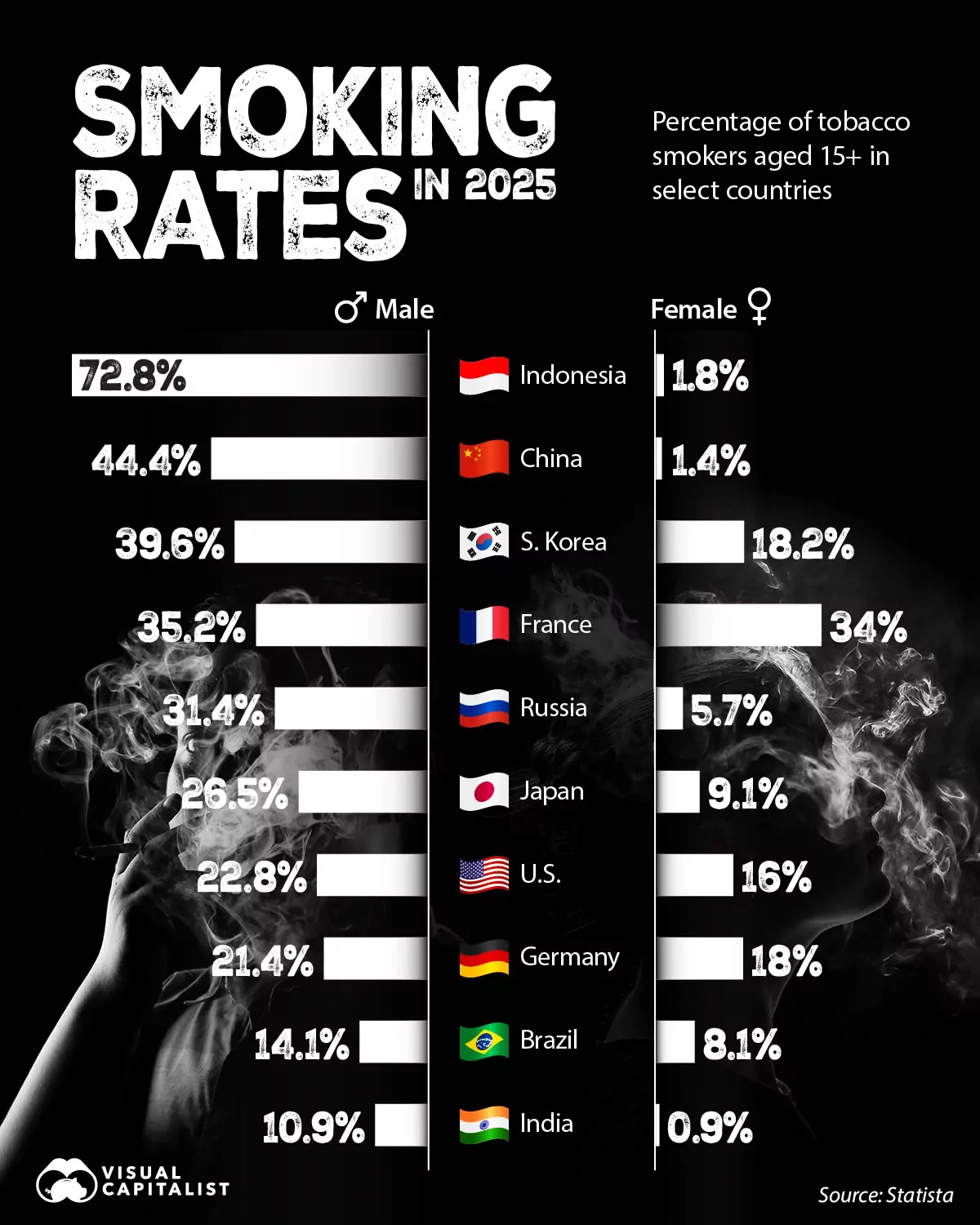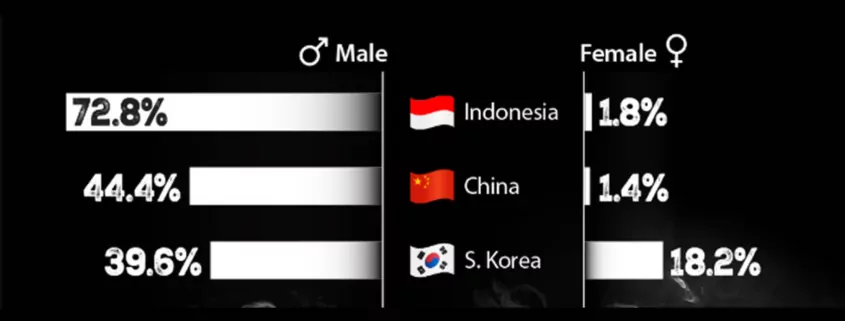Indonesia, China, and South Korea Lead World in Smoking Rates
Smoking continues to be a major global health problem, causing over eight million premature deaths annually, including 1.3 million from secondhand smoke, according to the World Health Organization (WHO). New analysis reveals that Indonesia, China, and South Korea have some of the highest smoking rates globally, particularly driven by an overwhelming prevalence among men.
An analysis by Visual Capitalist, using Statista data, shows Indonesia leading the ranking with a staggering 72.8% of men smoking, compared to just 1.8% of women. In China, the rate is 44.4% for men versus 1.4% for women. South Korea also shows a significant disparity, with 39.6% of men smoking compared to 18.2% of women. This suggests that in many parts of Asia and some developing nations, smoking remains a culturally accepted, predominantly male habit.
This stark gender gap narrows considerably in many Western nations. In Europe, countries like France (35.2% men vs. 34% women) and Germany (21.4% men vs. 18% women) show near parity. The United States (22.8% men, 16% women) and Japan (26.5% men, 9.1% women) also have smaller gaps. Other major nations like Russia (31.4% men, 5.7% women) and Brazil (14.1% men, 8.1% women) fit this pattern of higher male prevalence but a less extreme divide.

Despite a gradual decline in the global proportion of smokers, from 21.7% in 2020 to an estimated 19.8% in 2025, the problem persists. International health organizations emphasize the need for strengthened tobacco controls, such as high taxes, advertising restrictions, and robust anti-smoking campaigns, especially in countries with high male smoking prevalence. Additionally, experts stress the importance of addressing the rise of derivative products like vapes, which also pose health risks, to prevent new forms of nicotine addiction.
- Malaysia Negeri Sembilan Backs Vape Ban, Awaits Clear Laws - August 5, 2025
- Is It Illegal to Vape or Smoke While Driving in Massachusetts? - August 5, 2025
- Austria Plans to Ban Disposable E-Cigarettes - August 5, 2025








